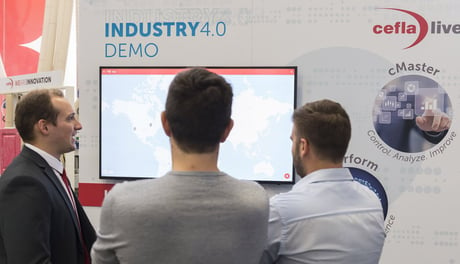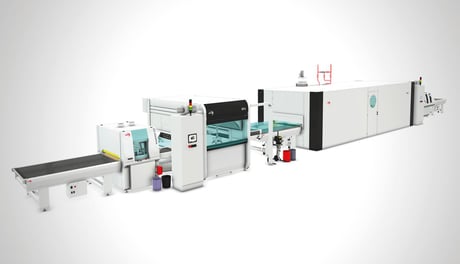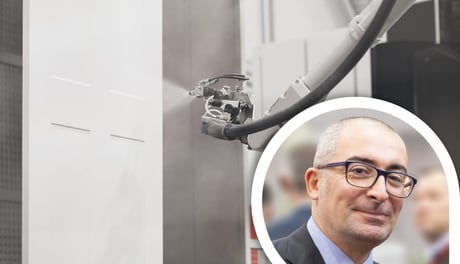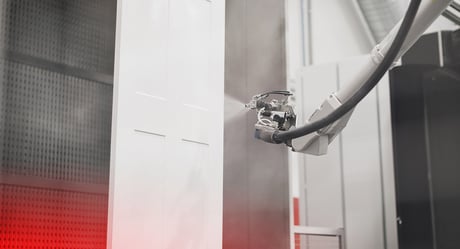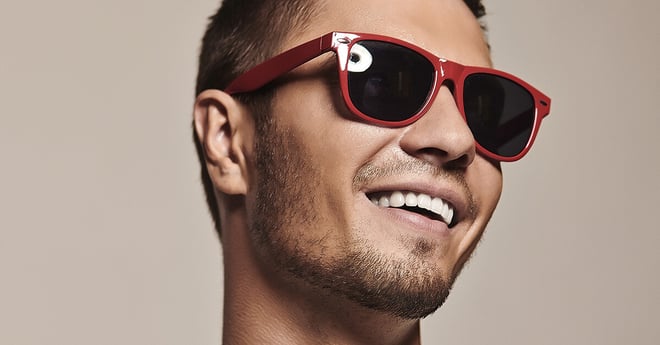
Everyone involved in eyeglass coating knows perfectly well that it is, perhaps, the most decisive process when it comes to giving the final product aesthetic appeal. Design and materials are certainly crucial when it comes to building a good frame. However, vibrant colours, high-quality finishes and the right ‘feel’ are equally decisive factors, leading consumers to choose products that will match their own look and, possibly, improve it.
In other words, aesthetics are as important as the practical, protective characteristics provided by the coating process.
The major brands are well aware of this: that’s why they’re always looking for partners who can guarantee an optimal approach to eyeglass coating, minimising costs but without ever compromising on quality.
This article explores the main coating techniques used on plastic eyeglasses (and those made of other materials). It also illustrates how Cefla Finishing - by drawing on decades of experience and constantly striving to improve the efficiency and performance of finishing lines - has succeeded in designing an advanced system with customisable configurations.

Want to discover the universe of objects with complex geometric shapes that are coated with Cefla Finishing equipment?
The main eyeglass coating techniques
First of all, note that different techniques can be used to treat these semi-finished products, whether they be complete frames or individual components. However, if the goal is to achieve premium-level quality, it’s essential that plastic eyeglass coating be performed inside a pressurized area that is sealed off from the external environment.
In many cases it’s preferable to use a liquid coating as it allows fast drying, even at relatively low temperatures. Not only that, it ensures impeccable output on any type of material, guaranteeing a broad range of aesthetic results, from RAL colours and metallic/iridescent effects to soft-touch finishes.

Liquid coating is usually applied by spraying. This can be done using machines or by way of manual techniques, depending on the type of product being made.
Regardless of the type of process, the coating will have to be dried. For this reason, semi-finished products need to be placed, in series, in one or more ovens before proceeding to the next stage, which usually consists of polishing.
How to maximise eyeglass coating process flexibility (on plastic or other materials)
These are the most popular methods when it comes to plastic eyeglass coating: traditional approaches that have pros and cons, to be carefully assessed before starting up a finishing line. And then there's the Cefla Finishing approach, which has resulted in the development of an integrated solution that combines productivity, efficiency and precision.
On the Cefla-designed line, in fact, the various eyeglass components are attached to a rotating support. This is positioned underneath a series of spray guns, which coat them at high speed while any overspray is controlled and minimised using water filtration. The ability to configure the machines according to specific finishing requirements ensures coating is performed efficiently without having to program special trajectories.

All this takes place inside a pressurized, air-conditioned zone, ensuring the correct ambient conditions for the process in use. The system can also rapidly be adapted to different types of coatings. Moreover, simplified format changeover procedures guarantee greater flexibility.
By leveraging an integrated, fully automatic system, this approach improves energy/raw material management and delivers high-quality coating.
Which machines are used to coat eyeglasses? Building a high-performance line
The line designed by Cefla Finishing includes highly specialised machines. These are designed to simplify control of every step in the coating process, for eyeglasses or other objects of complex shape.
Let’s begin with iBotic, the one- or two-arm Cartesian spraying robot with interpolated axes that’s perfect for high output capacities and maximum quality. This machine stands out for its capacity to simultaneously process pieces of different shape and thickness, with the conveyor either at standstill or on the move, in tracking mode. Lastly, the passage in the oven features Aquadry technology, a combined in-line system that merges the effectiveness of high-speed hot air with the high radiant capacity of infra-red lamps. This is the most efficient acrylic coating drying method as it requires less time to evaporate the water contained in the coatings.
Cefla Finishing and tailor-made solutions to coat plastic eyeglasses and other items
The above is just one example of the potential of a dedicated metal and plastic eyeglass coating line. Thanks also to a vast selection of finishing solutions and a 3000 m2 lab facility where customers can engage in hands-on experimentation and development of customised equipment, Cefla Finishing is able to adapt each process technology to most of the market’s specific needs.
By leveraging a constantly-evolving machine range, it’s possible to use in-depth technological integration to optimise not just the coating of eyeglasses but also the finishing of wooden furnishing accessories, helmets, musical instruments, solar panels, car dashboards and ceramic slabs. In other words, the opportunities are practically limitless: all you need to do is contact one of our experts and come and see how the Cefla range can help you take your business to the next level!
LOOKING FOR THE IDEAL SOLUTION FOR YOUR COATING LINE?



